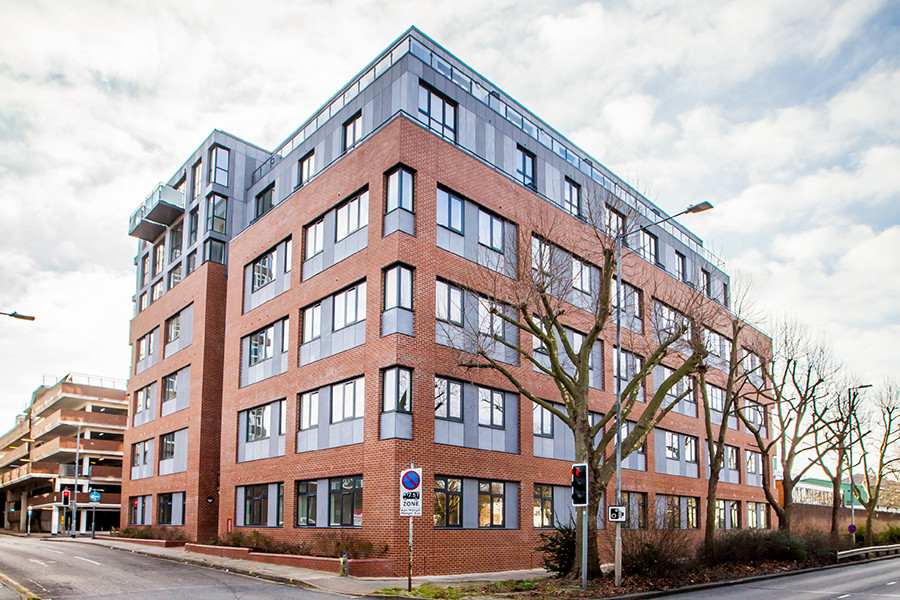7 years ago
6 Construction Health and Safety Nightmares and How to Avoid Them

At Davis Construction, health and safety is the number one priority and we are proud to operate with an unfaltering level of care during any task. As many of our projects require us to work in live environments, risks extend from our team to the wider public making it critical that the correct procedures are in place.
Here, we have compiled six of the most common health and safety nightmares and our advice on how to avoid them. With this understanding, your health and safety manager can have a better night’s rest, knowing any potential hazards are under control.
#1 Workers Falling from Heights
It is usual during construction projects that people will be required to work at heights, especially on large-scale developments. In accordance with the Work at Height Regulations 2005, any work at height must be properly planned, supervised, and carried out by competent staff.
By selecting the right type of equipment to be used, from scaffold access and guard rails to mobile elevating work platforms (MEWPs), this nightmare can easily be avoided. However, it is important that procedures have been arranged for an emergency or accident, should one ever arise.
#2 Excavation Emergencies
Excavations unearth all sorts of health and safety nightmares: striking live services, people falling into holes, material for the sides of the excavation collapsing, etc. Before digging begins, a competent person should conduct a survey of the ground to eliminate any obvious dangers. These inspections will then continue before every shift and after any event that may have affected the strength or stability of the excavation.
By providing a proper and safe means of access to the site and installing barriers and toe boards, you reduce the possibility of people - and tools or materials - falling into the excavation. Lastly, it is important that temporary supports are designed by engineers for the task at hand, helping to prevent the biggest danger of collapsing material.
#3 Don’t Get Burnt by Electrical Errors
An electrical error on site could result in many unwanted outcomes, from a small shock and painful burns, all the way to a site explosion. Make sure your workers are fully trained on how to use any electrical equipment safely and NEVER overload sockets by using unfused adaptors. Every cable should be identified and labelled correctly to avoid confusion, and ensure there are no trailing cables, which someone could easily trip over.
#4 Extinguish Fire-Related Dangers
According to HSE, every year hundreds of fires occur on construction sites across Essex and the UK. By carrying out a comprehensive fire risk assessment, you can identify the hazards and prepare the necessary safety precautions. Keep sources of ignition and flammable substances apart, ensure good housekeeping at all times, and have the correct firefighting equipment readily available. Use a permit-to-work system to manage hot works and check that control measures are correctly implemented.
Be prepared in the event of a fire by briefing all involved on site with the appropriate training, as well as how to detect and warn others of a fire; regular fire drills will help to familiarise workers with these procedures. All fire exits and escape routes must be clearly marked and unobstructed.
#5 Control Collisions
The clear and safe movement of people and vehicles around a construction site is imperative to reduce the risk of collisions. Traffic routes should be planned effectively, including a survey of road surface conditions and changes in gradients. Speed limits must be enforced, and all routes made clearly visible.
We encourage segregating vehicles and pedestrians wherever possible, including the use of separate site access and one-way systems, as this helps to minimise any situation where collisions could occur. Also, mark any dangerous or inaccessible areas for pedestrians, particularly where vehicles are required to cross footpaths.
#6 Get Some Extra Support
Not only will the collapsing of temporary works delay the completion date of a construction project, but this also poses a risk to the safety of both team members and the public. To prevent the unintended movement or collapsing of props or other temporary support, ensure they are designed by a competent engineer.
After the installation, check the works against the design and appoint a Temporary Works Co-Ordinator to manage the temporary works on a construction site.
It is only through the careful planning and maintenance of health and safety procedures that will ensure the successful completion of any construction project. This is why our team at Davis Construction always place safety as top priority before, during and after any project, irrespective of size or industry.
If you would like to find out more about the services we offer, call us on 01702 601000, or email info@davisconstruction.co.uk.

